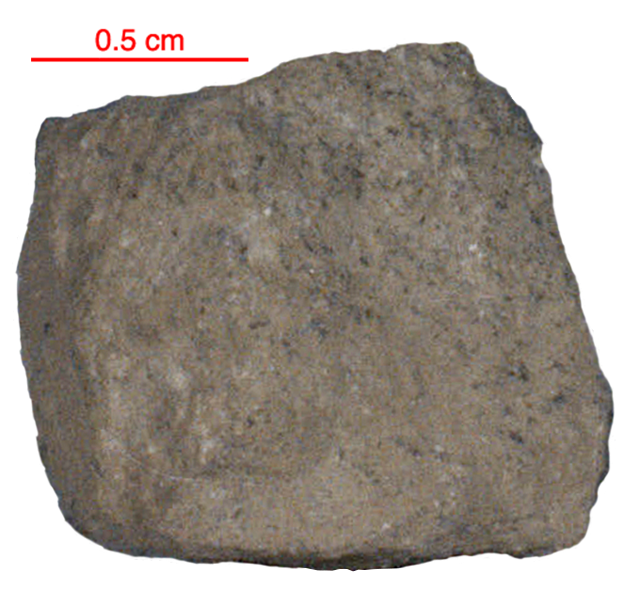
Fact sheet
15382 is a pristine feldspathic basalt with high rare earth-element content. Only a few pristine samples of this important rock type were returned from the Moon (e.g. 15386 and fragments in 15434). These fragments were recognised as samples of chilled volcanic liquid and have been a source of much speculation. The texture of 15382 is that of a fine-grained sub-ophitic basalt. Thin plagioclase laths (0.2 to 0.8 mm long) are intergrown with chemically zoned pyroxene. Large patches of groundmass are present, consisting of ilmenite, high-Si glass, cristobalite, tranquillityite, armalcolite, baddeleyite, whitlockite, apatite, Cr-ulvöspinel, troilite and metallic iron.
The sample weighed 3.2 grams before analysis. It has been dated at 3.91±0.05 billion years (Ar/Ar).
Further details of this and other Apollo samples are here: http://curator.jsc.nasa.gov/lunar/
Our thin section has previously been gold coated in preparation for analysis. Unfortunately some of this gold coat still resides in crevices within the sample.
The Apollo 15 landing site was in the Apennine Highlands, and close to Hadley Rille — a long, narrow winding valley. Approximately 76 kg of lunar material, including soil, rock, core-tube and deep-core samples, were returned to Earth.
This mission was the first flight of the Lunar Roving Vehicle which allowed the astronauts to venture further from the Lunar Module than in previous missions. During three periods of extravehicular activity, or EVA, on July 31st, and August 1st and 2nd, Scott and Irwin completed a record 18 hours, 37 minutes of exploration, travelling 17.5 miles, in the first car that humans had ever driven on the Moon.
Apollo 15 was launched on 26 July 1971.






